
You Don’t Need a Lot of Water to Create a Beautiful Garden
A landscape designer creates a front yard and courtyard that reflects his parents’ passions.
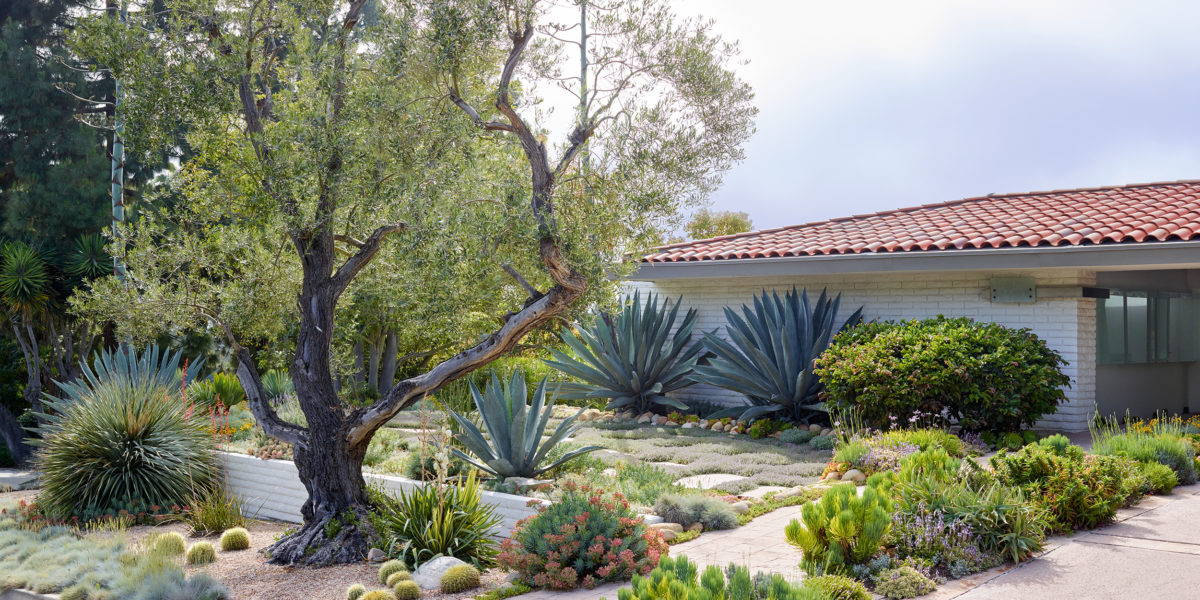
Marion Brenner
When landscape designer James Lord, a founding partner at Surfacedesign, went to create a garden for his parents’ home in Palos Verdes, California, he found a way to pay homage to both their passions. His dad is a seismic civil engineer, while his mom is an avid gardening ex-pat from New Zealand who volunteers at the South Coast Botanic Garden.
As a result, he says, for his father, “I wanted to create something with cracks and shifts in the paving that are an homage to an ever-moving California landscape.”
Those spaces were then dedicated to his mother’s plant collection, where each crack represents a “little garden” that she’s planted by hand. “The idea was that I could set the table and make sure it’s all working, and that would allow her the flexibility to create these different areas of plantings,” says Lord.
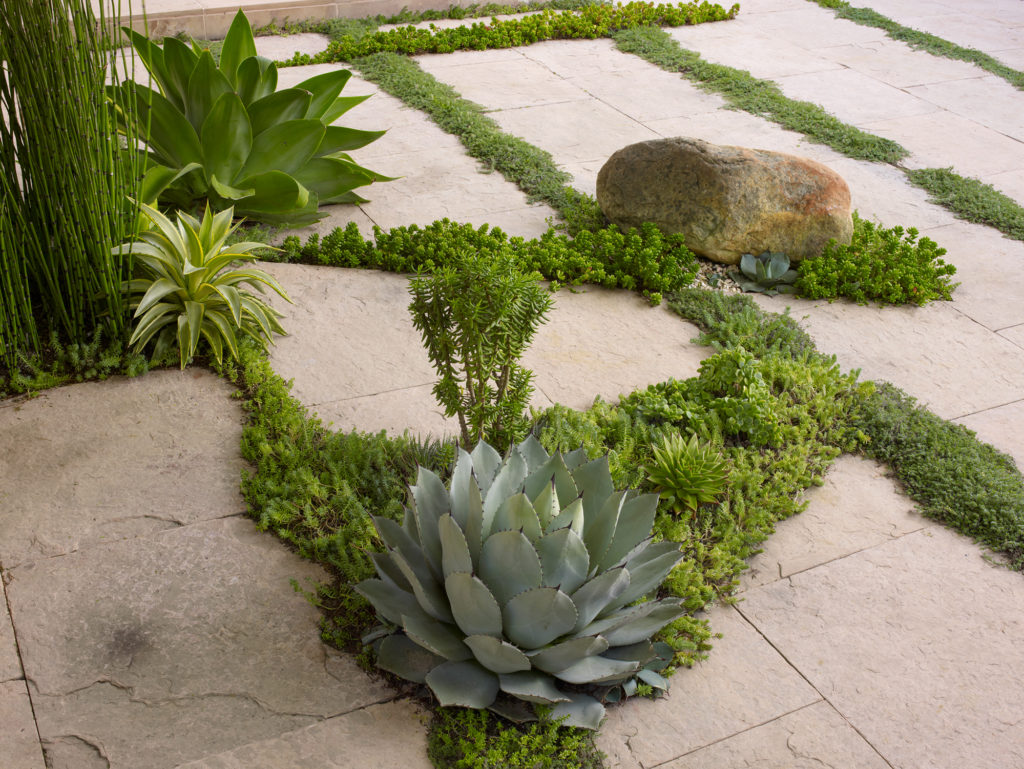
Marion Brenner
A close-up of one little world contains a variety of plants: Agave parryi, sedums, Euphorbia, Echeveria, and a baby agave Americana all flourish in one small crevasse. “She’s a retired librarian from USC’s law school, so she loves to collect and categorize things,” Lord says. “And she has a wonderful community at the botanic garden where they’re constantly introduced to wonderful new plants. So, she’ll bring a cutting back and plant it directly into the garden.”
Lord intentionally designed the space as what’s known as a “dry garden.” As in, it features plants that use low water once established. “You don’t have to have a lot of water to create a beautiful garden,” Lord says, pointing out that the sandstone used in the exterior courtyard is intentionally light in color. “It doesn’t retain heat, or the plants could dry out,” he says.
Meanwhile, in the front yard, a lawn was removed, sandstone pavers were brought in from Arizona, and thyme is used as a ground cover. Lord says his parents were the first to remove the lawn in the neighborhood, so it became a talking point. “People like to stop by and ask how the plants are doing,” he says.
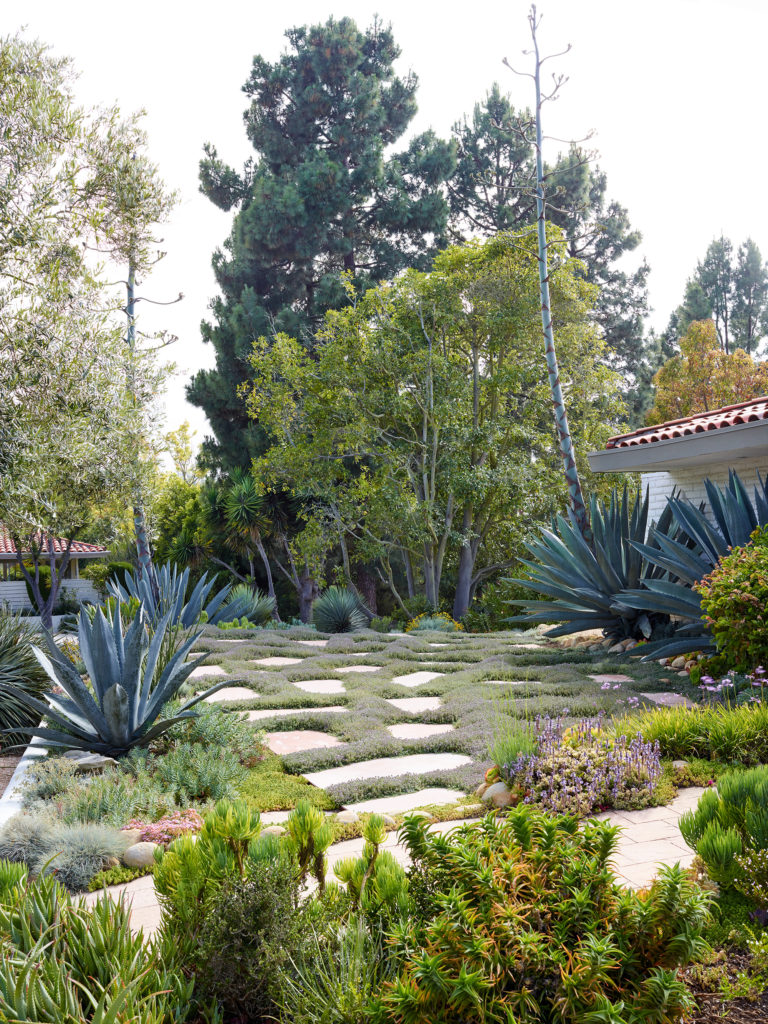
Marion Brenner
Once you walk through the front yard, you come to a covered indoor/outdoor hallway so there is a blurring of the lines between in and out. Horsetail plants provide natural privacy screening for the home.
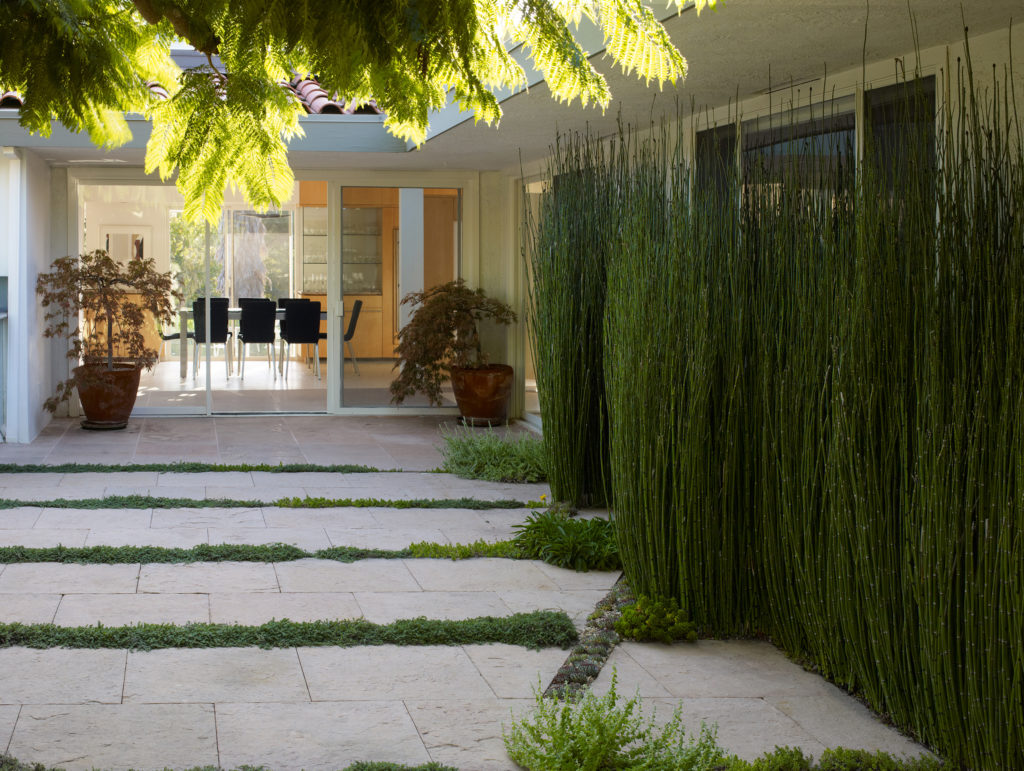
Marion Brenner
Although this is a dry garden, a water feature was important to include. “The sound of water is so soothing,” says Lord, who is also a trained architect. “I created that fountain at the front of the house, between the interior and the exterior. With the glass box, water and light moves through there so you can experience a focal point at the entry to the home.”
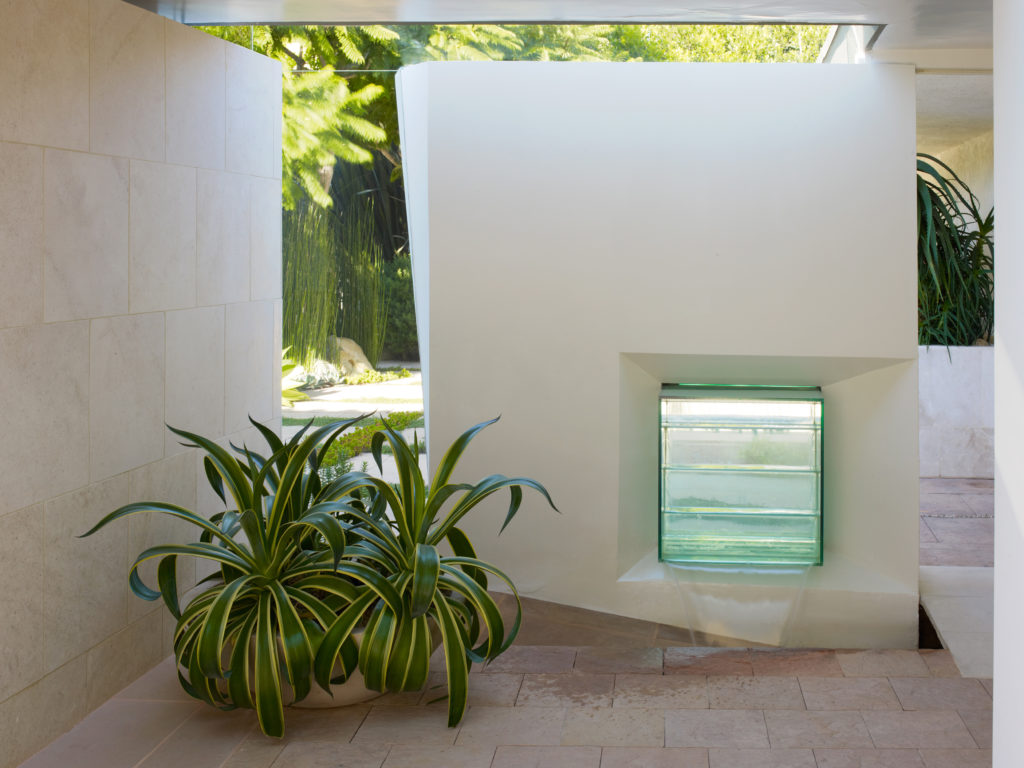
Marion Brenner
Along with the little worlds that exist between stone, bigger plantings also thrive. Lord’s mother planted a New Zealand Christmas tree to remind her of home. Protea from a farm in San Diego thrive in one area, and Euphorbia takes on a sculptural quality in another. “Different things have thrived over the years,” Lord says. “So we see plants that were popular at certain periods, but they’re still there so it’s a very eclectic kind of garden.”
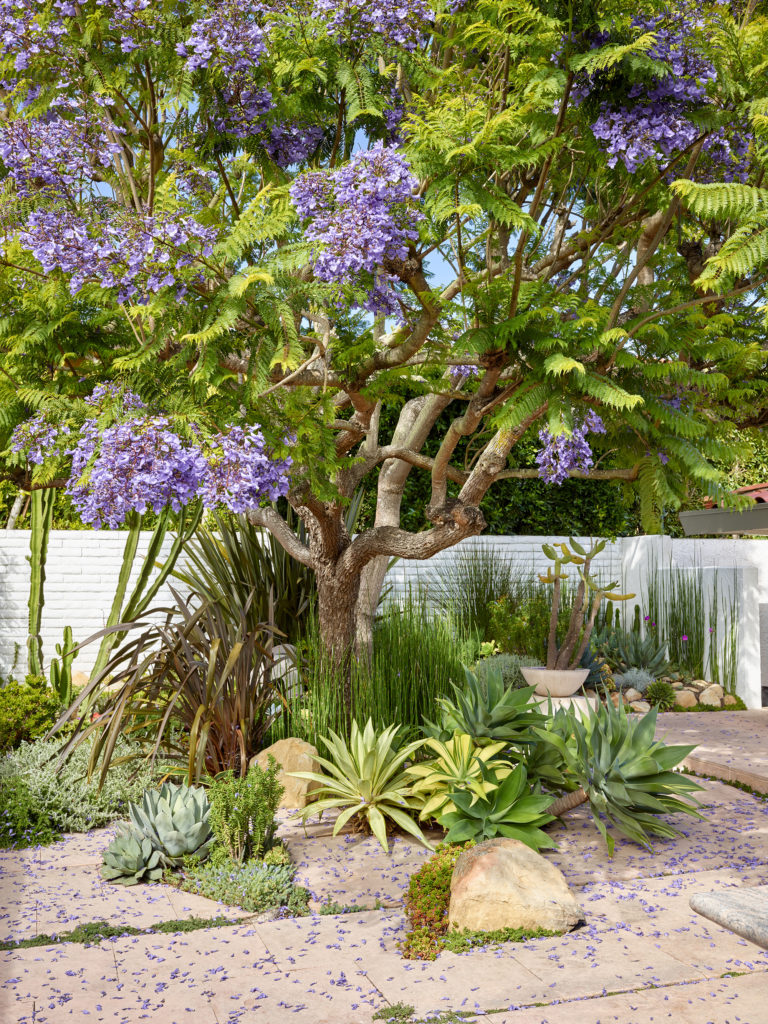
Marion Brenner
Overhanging much of the courtyard is a mature jacaranda tree that was planted “probably back in 1970,” says Lord. “It has these wonderful blue flowers, and my father is always like, ‘Ugh they’re dropping again.’ And my mother says, ‘But isn’t it beautiful? That lovely blue carpet?’ I have to say, I’m more of my mother’s persuasion.”
Read the Current Issue Here!
Get one year of Sunset—and all kinds of bonuses—for just $24.95. Subscribe now!
